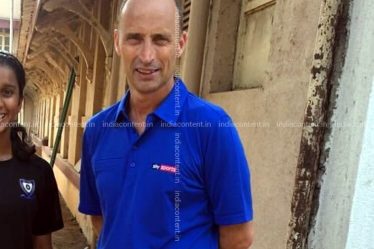Mirza Ghalib Biography
A prolific and legendary Urdu and Persian poet, Mirza Ghalib was remembered on his 151st death anniversary. He was born as Mirza Asadullah Baig Khan in Kala Mahal, Agra into a Central Asian family proceeded from Aibak Turks (who were fighters in earlier times) on 27th December 1797. His father’s name was Mirza Abdullah Baig and his mother’s name was Izzat-ut-Nisa Begum who was an ethnic Kashmiri. He wrote with a nom de guerre of Asad before choosing the name Ghalib for himself. He was the most prominent and outstripped poet of his times.
Ghalib was orphaned at an early age when his father died in a battle in 1803 in Alwar and left to the heavenly abode, leaving Mirza alone at the age of five. He was staying with his uncle who also died after four years. Later, he was brought up by his maternal grandfather. At the age of eleven, he started writing poetries in which the sadness of his miserable life was clearly reflecting.
Ghalib exchanged his conjugal vows with Umrao Begum, daughter of Mirza Elahi Bukhsh Khan Maaroof (brother of the Nawab of Ferozepur Jhirka) at the age of 13 and shifted to Delhi as a tenant in the proximities of Old Delhi. Due to financial concerns, none of his seven children survived beyond infancy. He faced many difficulties throughout his life as he was never into the regular jobs and was counting on aegis from royalty. After the initial captivity of life, he mentioned marriage as second confinement.
Ghalib’s most remarkable three compositions include ghazal (lyric), masnavi (moralistic or mystical parable) and qasidah (panegyric).
In 1807, Ghalib penned down his first poetry. Initially, he worked at Delhi Fort but with no certainty. He had to go through the hardships to make his ends meet as he used to recite his poetries in front of Bahadur Shah Zafar. He was being paid Rs.50 as a monthly salary and was named as Najmul Daula Dabeer-al-Mulk Nizam Jang. Bahadur Shah gave him a job of composing the history of a distinguished Indian family. After the 1857 war of independence against British rule, the government did not give him any allowance. Ghalib again came back to zero and urged support from Nawab Yusuf Ali Khan. He replied by promising the poet a lifetime monthly amount of Rs. 100.
The key to the poetry of Mirza Ghalib lies in his comprehension of the human subconscious. His compositions not only reflect the speech and artistry of the verse but also reveal the simple facts of life to the society through his plentiful popular compositions.
Mirza Ghalib Life
The literary genius Ghalib is an immortal being. His name will be eternal in the pages of the history till the Urdu language lives.
During his era, he had observed the downfall of one of the largest Muslim empires in the history of the world. He had seen growing the efficacy of stately force in New Delhi like the Mughal Empire was overshadowed and uprooted by British Colonial, eventually demoted following the defeat of the Indian rebellion of 1857. He explained these events in his verses.
Mirza Ghalib was the only poet who portrayed social, political and controversial issues in his writings. He will reign till eternity.
Some of the Ghalib’s compositions were shown in 2015 movie ‘Masaan’ which displays several examples of his poetries and shaayaris, in conjunction with the works of Akbar Allahabadi, Basheer Badr, Chakbast, Mirza Ghalib and Dushyant Kumar. The film’s composer Varun Grover paid homage to the literary artist Ghalib Sahab by portraying the character of Shaalu whose interest lies in reading Hindi poetries and shaayaris. The youth in Northern India usually loves to read such content when they are in love, this aspect is rarely featured in Hindi movies.
Google search engine displayed a special doodle for him on its Indian homepage to celebrate his 220th birthday on 27th December 2017.
In early 2000, a big statue of Mirza Ghalib which features him as a great Urdu poet, was set up in Jamia Millia Islamia University Entrance in Delhi.
On 21st January 2019, a wall landscape measuring 10 ft. * 42 ft. interpreting Ghalib’s life and his works was set up at the Mirza Ghalib Road in the Nagpada Locality of Mumbai. This landscape is placed outside a Municipal Garden near the Madanpura Area of Mumbai, formerly was a nerve centre of art, literature, writers and poets.
Several ghazal maestros including Jagjit Singh, Mehdi Hassan, Abida Praveen, Farida Khanum, Tina Sani, Madam Noor Jehan, Mohammed Rafi, Asha Bhosle, Begum Akhtar, Ghulam Ali, Nusrat Fateh Ali Khan and Rahat Fateh Ali Khan have also belted out his ghazals. Various South Asia singers have also sung many of his ghazals.
The classical renowned Urdu poet Mirza Ghalib took his last breath on 15th February 1869 in New Delhi.
Mirza Ghalib Images on India Content
The India Content Website has a huge stock of high-quality images related to Mirza Ghalib. The pictures are available in three sizes – small, medium and large.
You can purchase various other content images from the https://www.indiacontent.in



